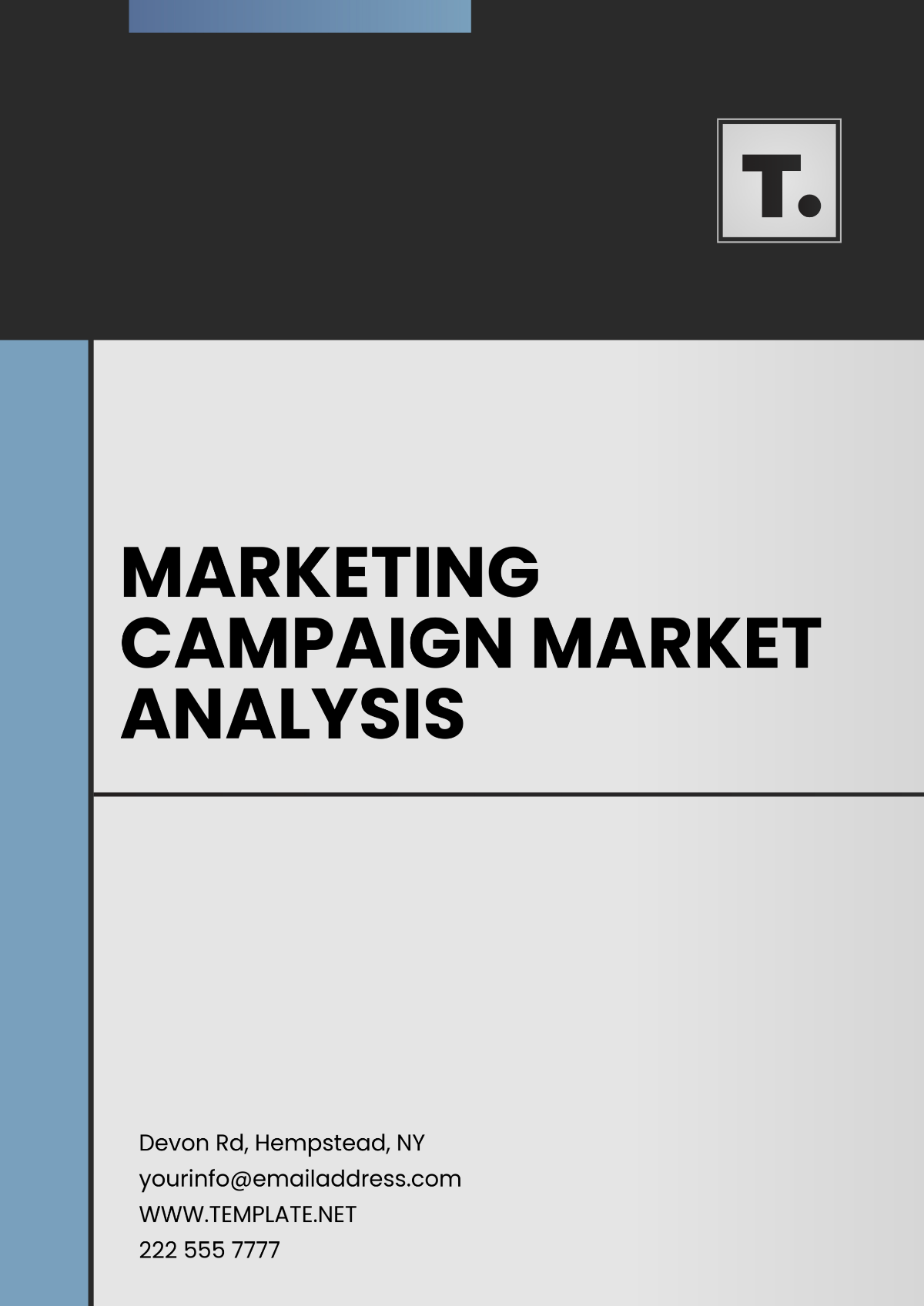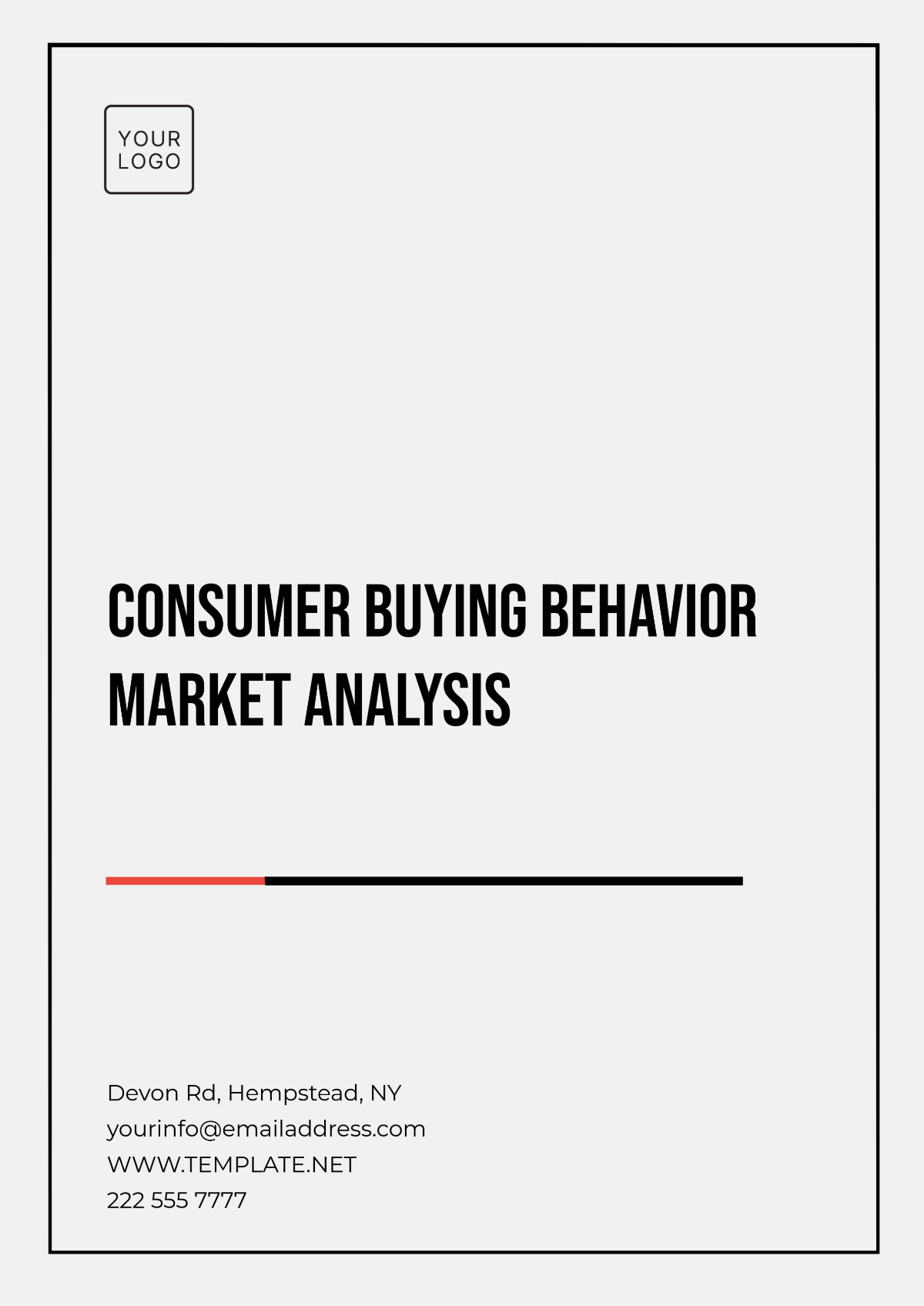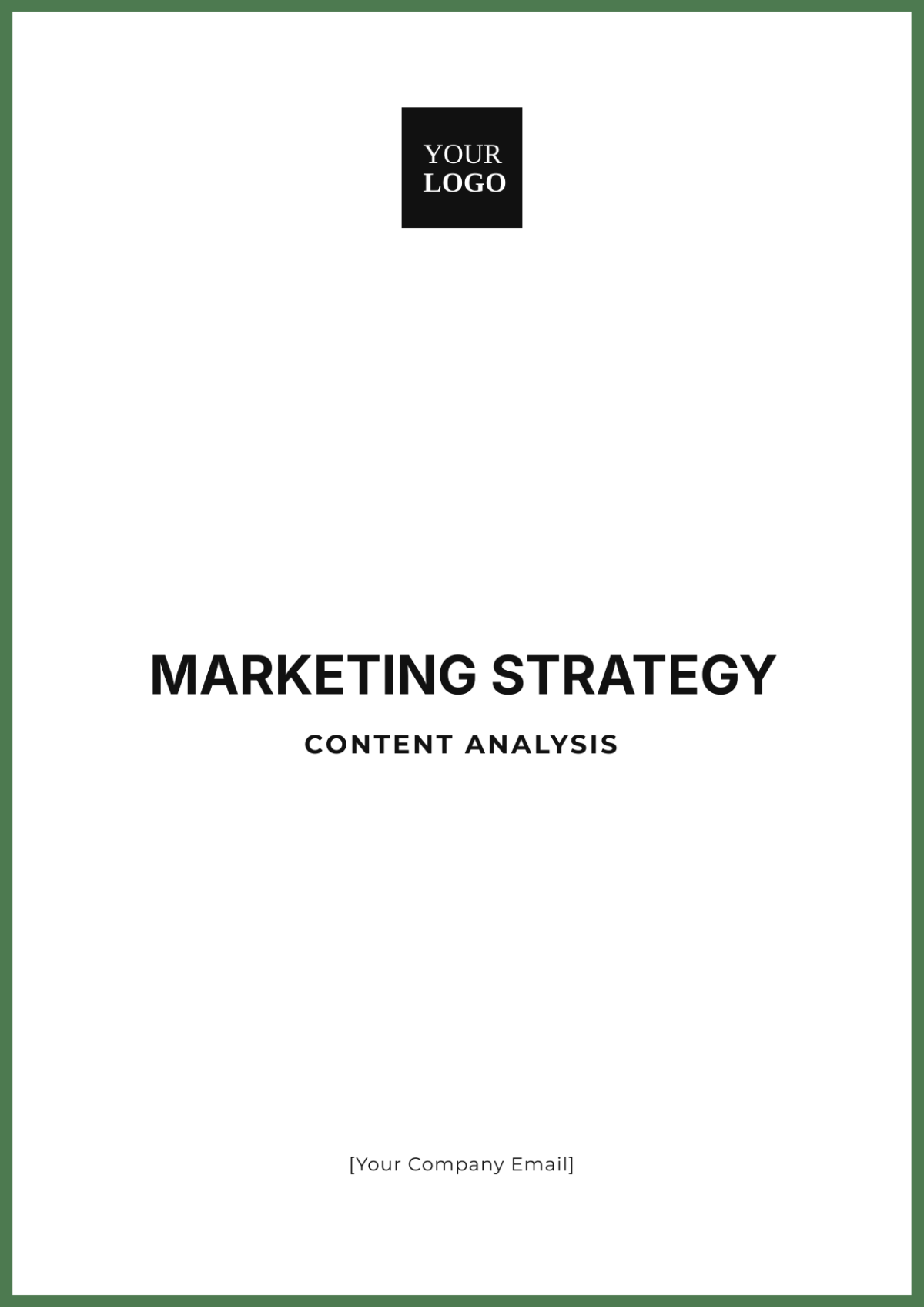Marketing Campaign Performance Analysis
I. Executive Summary
A. Overview of the Campaign
[Your Company Name]'s [Campaign Name] was designed to capitalize on the increased consumer spending during the summer months. It utilized a multi-channel approach, including targeted email marketing, engaging social media ads, and special promotions on the website. The campaign was launched on [Date] and ran for six weeks, concluding on [Date]. The integrated strategy aimed to maximize reach and drive conversions across various touchpoints.
B. Key Objectives and Goals
The primary objectives of the campaign were to drive a [00]% increase in website traffic, achieve a conversion rate of [00]%, and acquire 1,000 new leads. Secondary goals included enhancing brand visibility and engagement through social media and email channels. Each objective was designed to contribute to overall sales growth and customer acquisition. Tracking these goals allowed for a focused approach and measurable outcomes.
C. Summary of Findings
The campaign exceeded its traffic goal by [00]%, achieving a [00]% increase, and surpassed the lead generation target with 1,200 new leads. However, the conversion rate reached [00]%, slightly under the [00]% target. Social media engagement was notably high, with increased interaction rates and positive feedback from participants. The findings highlight both successful aspects and areas needing improvement for future campaigns.
D. Strategic Recommendations
To improve conversion rates, it is recommended to enhance the design and functionality of landing pages to better capture and retain visitor interest. Increasing the budget allocation for high-performing social media ads could leverage their effectiveness further. Implementing A/B testing for email campaigns and promotional content will provide insights into the most effective strategies. Additionally, refining target audience segmentation based on campaign performance data could optimize future efforts.
II. Campaign Objectives
A. Detailed Objectives
The campaign sought to increase website traffic by leveraging summer-themed promotions and discounts to attract more visitors. Converting this traffic into paying customers was a critical objective, aiming for a conversion rate of [00]% through targeted calls-to-action and personalized offers. Lead generation was another key goal, focusing on building a robust email list for future marketing initiatives. Enhancing brand visibility and engagement was also a priority, aiming to strengthen the overall market presence.
B. Key Performance Indicators (KPIs)
KPIs for the campaign included website traffic growth, tracked through Google Analytics to measure the increase in unique and returning visitors. Conversion rate was assessed by monitoring the percentage of visitors who completed a desired action, such as making a purchase or signing up for a newsletter. Lead generation was quantified by the number of new email subscribers added during the campaign period. ROI was calculated to evaluate the financial return relative to the campaign expenditure.
C. Target Audience and Market Segmentation
The campaign targeted existing customers aged 25-40 who have previously shown interest in summer promotions. New customers, particularly those aged 18-30, were targeted with special introductory offers to expand the customer base. Regional segmentation was applied based on historical purchase data, focusing on areas with higher past sales activity. This segmentation allowed for tailored messaging and promotions to different audience groups.
III. Methodology
A. Data Collection Methods
Data was collected through various channels, including Google Analytics for website traffic metrics and social media platforms for engagement statistics. Email marketing performance was tracked using Mailchimp, providing insights into open rates, click rates, and subscriber behavior. Surveys and feedback forms were also utilized to gather qualitative data on customer experience and satisfaction. Comprehensive data aggregation allowed for a thorough analysis of campaign performance.
B. Data Analysis Techniques
Quantitative analysis involved statistical evaluation of traffic numbers, conversion rates, and revenue figures to determine overall performance. Qualitative analysis included reviewing customer feedback and sentiment to understand engagement levels and satisfaction. Comparative analysis was used to benchmark current campaign performance against previous campaigns and industry standards. Data visualization tools were employed to create charts and graphs for clearer interpretation of results.
C. Timeline and Phases of Analysis
The data collection phase spanned from [Date] to [Date], capturing all relevant metrics and feedback throughout the campaign period. Analysis began on [Date], focusing on aggregating and evaluating data to assess performance against objectives. The reporting phase, from August 1 to August 5, involved synthesizing findings into a comprehensive report with actionable insights. This structured timeline ensured a systematic approach to performance evaluation.
IV. Performance Metrics
A. Overall Campaign Performance
The total expenditure for the campaign was $[00], exceeding the initial budget of $[00] due to higher-than-expected ad costs. Despite the overspend, the campaign achieved a [00]% ROI, generating $[00] in revenue and demonstrating strong financial return. Performance was measured against the set objectives, with notable success in traffic and lead generation, although conversion rates fell slightly short. The overall performance highlights the effectiveness of the campaign strategy in driving engagement and revenue.
B. Digital Metrics
Website traffic increased by [00]%, surpassing the target by [00]%, reflecting successful outreach and visibility efforts. Click-through rates (CTR) averaged [00]% for social media ads and [00]% for email campaigns, indicating strong audience interest and interaction. Conversion rates were measured at [00]%, just below the [00]% target, signaling the need for further optimization. These metrics provide a clear picture of digital engagement and effectiveness.
C. Engagement Metrics
Social media interactions were substantial, with a total of 10,000 likes, 1,500 shares, and 500 comments, showing high levels of engagement and content resonance. Email campaigns achieved an open rate of [00]% and a click rate of [00]%, reflecting effective messaging and call-to-actions. Engagement metrics indicate a successful connection with the audience, though further analysis is needed to improve conversion rates. The high level of interaction underscores the campaign's impact on social platforms.
D. Sales Metrics
Lead generation exceeded the target with 1,200 new leads, expanding the email list and potential customer base. Sales volume reached $[00], demonstrating the campaign's effectiveness in driving revenue. The average order value and frequency of purchase data provide insights into customer behavior and campaign impact. Sales metrics confirm the campaign's success in achieving its revenue goals and contributing to overall business growth.
V. Data Analysis
A. Comparative Analysis
Benchmarking Against Previous Campaigns
The current campaign was benchmarked against last year’s summer campaign, showing a [00]% increase in website traffic and a [00]% increase in lead generation. Conversion rates were slightly lower this year, indicating a need for optimization in converting traffic into sales. These comparisons provide context for understanding current performance relative to historical data.
Competitive Analysis
A comparative analysis with competitors revealed that our social media engagement rates were higher, with a [00]% greater interaction rate compared to industry averages. However, competitors had a slightly higher conversion rate, suggesting a stronger closing strategy. Understanding these competitive dynamics helps identify areas where we can enhance our approach.
B. Trend Analysis
Short-Term Trends
During the first two weeks of the campaign, there was a spike in engagement and traffic, likely due to the initial promotional push and increased media spend. However, engagement levels plateaued in the subsequent weeks, suggesting a need for refreshed content or additional incentives to maintain momentum. Monitoring these short-term trends is crucial for real-time adjustments.
Long-Term Trends
Over the course of the campaign, traffic and lead generation showed consistent growth compared to previous campaigns, indicating a successful long-term strategy. However, the slight dip in conversion rates towards the end of the campaign suggests that sustained engagement does not always equate to higher conversions. Long-term trend analysis helps in forecasting future performance and planning accordingly.
C. Insights and Interpretations
Patterns and Anomalies
The data revealed a pattern of high engagement on social media but a drop in conversion rates, highlighting potential issues with the final purchase process. Anomalies such as unusually high traffic from specific regions suggest that targeted promotions were effective but may need refinement. Identifying these patterns helps in fine-tuning future campaigns.
Customer Feedback and Sentiment
Customer feedback indicated a positive reception of the promotional offers but noted difficulties navigating the checkout process, which may have contributed to lower conversion rates. Sentiment analysis from social media and surveys revealed high satisfaction with the campaign’s content and messaging. This feedback is valuable for addressing issues and enhancing customer experience.
VI. Findings
A. Successes
The campaign successfully exceeded its traffic and lead generation goals, demonstrating effective outreach and engagement strategies. Social media performance was particularly strong, with high levels of interaction and positive sentiment. These successes highlight the campaign’s strengths in driving visibility and attracting new leads.
B. Areas for Improvement
Despite strong traffic and engagement, the conversion rate fell short of the target, suggesting a need for improvements in the conversion funnel. The campaign’s overspend compared to the budget indicates a need for better financial planning and cost management. Addressing these areas will enhance overall campaign effectiveness and efficiency.
C. Unexpected Outcomes
An unexpected outcome was the higher-than-anticipated social media engagement, which was a positive surprise and demonstrates the effectiveness of the social media strategy. Conversely, the lower-than-expected conversion rate was an unexpected challenge, revealing gaps in the conversion process. These outcomes provide valuable lessons for refining future campaigns.
VII. Recommendations
A. Strategic Adjustments
Campaign Strategy
It is recommended to focus on optimizing the conversion funnel, including improving landing page design and streamlining the checkout process. Adjusting the campaign strategy to include more targeted promotions based on performance data will help achieve better results. Enhancing personalization in marketing efforts could also improve overall effectiveness.
Target Audience Refinement
Refining target audience segments to better align with those showing higher engagement and conversion rates will improve campaign efficiency. Analyzing demographic and behavioral data to tailor messaging and offers can lead to more effective outreach. This approach will help in reaching the most responsive and profitable segments.
B. Tactical Changes
Media Channels
Augmenting the budget allocation for high-performing media channels, particularly those that have demonstrated significant success, such as various social media platforms, will further enhance their effectiveness and ability to deliver desired outcomes. Additionally, venturing into experimental territories by trying out innovative advertising formats and exploring new platforms could reveal untapped potential and additional opportunities for increased engagement with target audiences. It is imperative that all tactical adjustments be meticulously grounded in performance data, ensuring that decisions are data-driven and aimed at maximizing the return on investment (ROI) to achieve the best possible results.
Content and Messaging
Optimizing content and messaging to address feedback and improve relevance will enhance engagement and conversion rates. Implementing A/B testing for different content approaches will provide insights into what resonates best with the audience. Continuously refining content based on data will ensure it meets audience expectations and drives desired actions.
C. Budget and Resource Allocation
Reallocate Budget
Reallocating the budget to focus more on high-performing channels and strategies will improve overall campaign ROI. Reducing expenditure on underperforming areas will help manage costs and optimize financial resources. Strategic budget adjustments should align with performance insights and future objectives.
Invest in Tools
Investing in advanced tools designed for conversion rate optimization, including but not limited to heatmaps and user experience testing, will facilitate a more profound comprehension of user behavior. By enhancing analytical capabilities through the integration of new and emerging technologies, businesses can promote more informed and strategic decision-making processes. Dedicating resources to these advanced tools will not only improve the performance and outcomes of current campaigns but also set the stage for the success of future marketing initiatives.
VIII. Conclusion
A. Summary of Key Points
The [Campaign Name] achieved significant success in increasing traffic and generating leads, with notable strengths in social media engagement. However, it fell slightly short of the conversion rate target and exceeded the budget. These insights underscore the effectiveness of the campaign while highlighting areas for refinement.
B. Final Thoughts
Overall, the campaign demonstrated a strong ability to drive engagement and revenue but revealed opportunities for optimization in conversion strategies. Addressing these areas will enhance future campaign performance and ensure better alignment with objectives. The lessons learned from this campaign will inform and improve future marketing efforts.
C. Next Steps
Implement recommended changes to optimize conversion rates and adjust budget allocations based on performance data. Prepare for the next campaign with a focus on refining targeting and content strategies. Continuously monitor and evaluate campaign performance to make data-driven adjustments and achieve better results.

















































